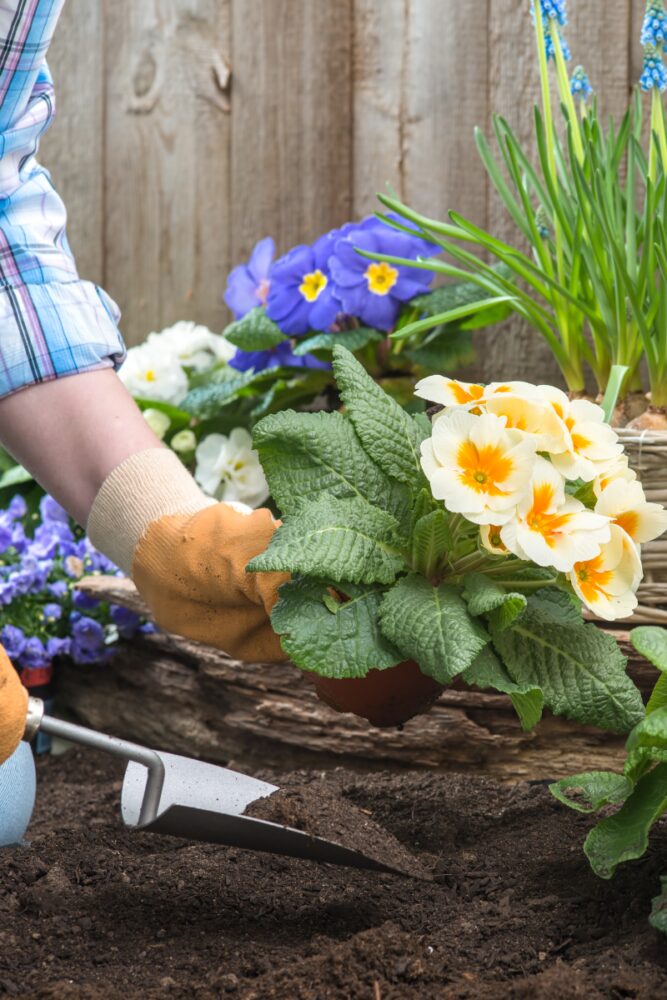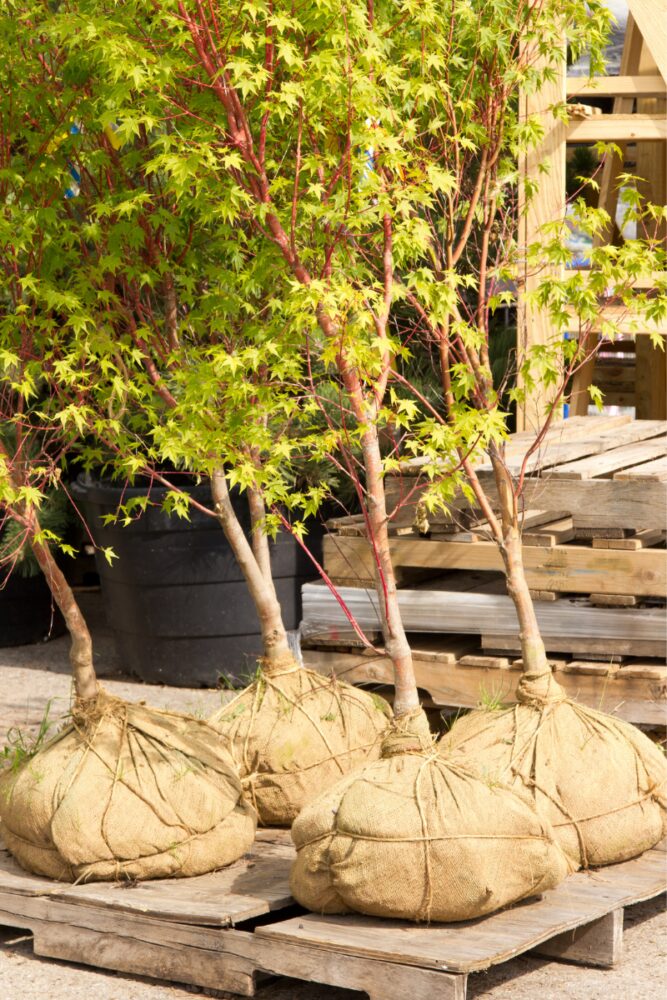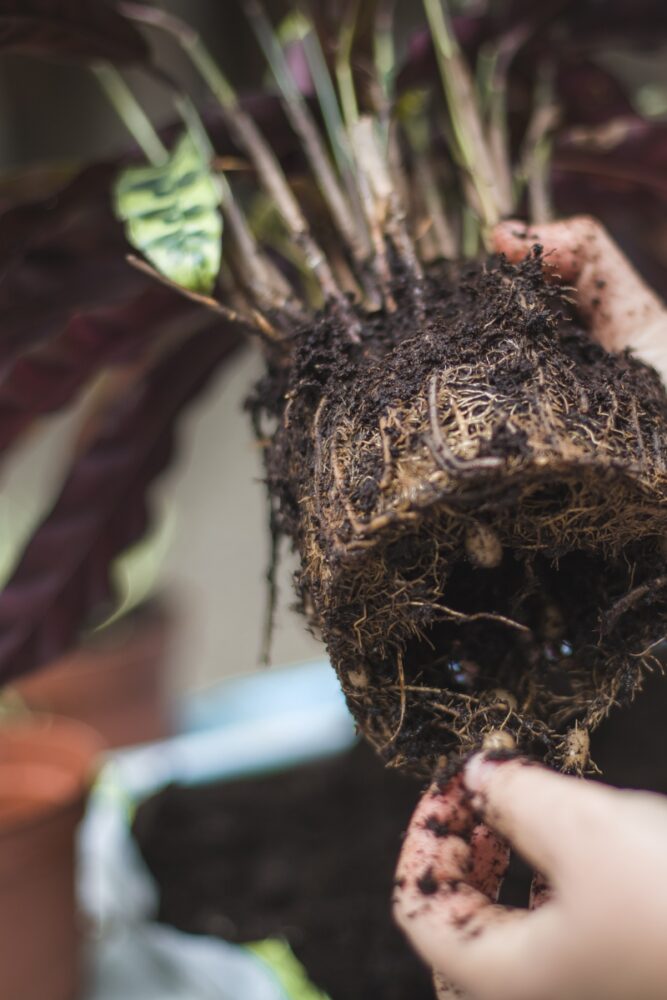
Planting Tips
We call ourselves a nursery because our “product” is not ready to survive without your care and attention. We work behind the scenes and before store hours to make sure every item in our nursery receives specific care. While you might not see all of our hard work, our healthy inventory speaks for itself!
We do everything we can to make sure our plants are happy and healthy while at the nursery, so it’s up to you to make sure they receive the care they need at their new homes. The sooner you can get them properly planted, the better! Even after your new plant is in the ground, it still needs routine care and attention. It can take weeks, or even months, for a new plant to settle itself into your landscape or garden.
Many of our plants do best in a particular growing season, and others, like our indoor plants, can be easy to grow with minimal care. Caring for and growing plants is a fun learning experience! Whether you are looking to start small or go big, please don’t hesitate to ask one of our plant specialists for the best care plan for your new plant. Below are a few guides to help get you started. Happy planting!
General Garden Guide
- Remove plants from growing containers (Exception is B&B material—see below)
- Do not disturb the root mass. If heavy root material is apparent, score the root zone vertically with a serrated knife or small saw.
- Never dig a hole or plant deeper than it was planted in the original container.
- Always improve your soil in the planting area before planting anything. We recommend ProMix or LeafGro as an all-purpose soil amendment that will benefit every planting situation.
- Establish a regular watering schedule. For help, feel free to ask us about your plant’s specific watering needs. When mother nature gives us rain, this might mean we can take the day off from watering.
- Most newly planted material does not benefit from fertilizer application immediately. A root stimulator will help ensure less stress and shock, as well as encourage healthy root development.
- Depending on the type and age of the plant, fertilizing as soon as appropriate will ensure a ready supply of nutrients to the newly planted root system. This will range from a few days for tender annuals to a full six month for large trees and shrubs.

Planting Tips: B&B Materials
B&B (Ball and Burlap) is the term we use to refer to plant material that is grown in native soil, then dug and wrapped in burlap. Often larger plants and trees are also set into a wire basket to ensure root stability during transporting and transplanting. If You have purchased a B&B plant, remember that it will need watering twice daily until planted!
- Dig a hole at least twice as wide as the root ball on the plant. Do not dig the hole any deeper than the depth of the plant’s root ball mass. Gently roll the plant into its new home. Always used improved (amended) soil when planting in Maryland’s famous red clay. Using LeafGro mixed half-and-half with your extended soil will offer a much better chance for success.
- Carefully cut or untie any rope or string from around the top of the root ball. If the wire basket extends above the soil level, either cut it away carefully with wire cutters, or simply bend it back to below the soil level. Pull back the burlap from the top of the root ball, but do not disturb the sides. Just lay this loose material in the hole.
- Continue filling to the original soil level with improved soil mix. Firm the soil as you go to eliminate air pockets.
- Be careful not to over-compress new soil, and that the soil does not cover the top of the root ball.
- Create a “basin” with mulch. Be sure to water your new plant thoroughly. For the first year, the equivalent to 1” of new rainfall per week must be provided for any newly planted tree or shrub to survive.

Planting Tips: Container Materials
Follow these simple instructions to help improve your chances of success when transplanting any potted or “containerized” material. Plants grown in containers have a high chance of survival, as they are intact with their entire root structure in place.
- Remove plants from containers by laying the container on the ground and applying pressure to the side of the container. Never carry or pull on a plant in an attempt to remove it from its container.
- Using a tree straw, or large knife, make 1” deep vertical cuts from the top of the root mass to the bottom along the sides of the root mass. This will force new root growth and prevent girdling.
- Dig a hole at least twice as wide as the container and no deeper than the plant. Set your new plant in the hole and adjust position.
- Fill hole with amended soil to the original soil level. It is always better to have the root mass a little on the high side rather than too deep. Firm the soil around the plant careful, being careful not to over compress.
- Using your mulch, create a “basin.” Be sure that the top of the root ball is covered with a 2” layer of mulch. Water your new plant thoroughly. For the first year, the equivalent to 1” of new rainfall per week must be provided for any newly planted tree or shrub to survive. Unless we experience dry conditions, after the second year, a new plant should be able to survive on its own.

Seasonal Advice for the Holidays
How To Care For Your Live Christmas Tree
Prepare the Base
Create a fesh cut about 1″ from the bottom of the tree within 45 minutes of placing the tree in water. Use a small handsaw, not a reciprocal saw or any blade that moves fast enough to create friction. Friction can cause the sap to heat up and seal the wood so that no water will be absorbed.
Finding the Right Place for your Tree
Keep the tree away from hat ducts or other heat sources such as a south-facing window or a fireplace. corners are a great place for trees as it rotects the tree from knocks and bumps. the lover the temperature in the room the longer it will keep. Place your tree close to an outlet so you can plug in extension cords for lights and decorations. Make sure to put a mat down under your tree stand to protect your flooring or carpet.
Watering your Tree
The water basin in the stand needs to be kept full of water. Trees can absorb a gallon of water per day and up to 2 gallons of water in the first 48 hours after being put up. Be sure to check water levels frequently in the first few days. A tree that is absorbing water will be much less likely to dry out, become brittle, or a potential fire hazard. A tree preservative liquid, like Pro-long, added to the water can help your tree stay fresher. There are automated watering systems for Christmas Trees as well.
Re-Purpose your Tree After the Holidays
Pond Feed – Sink pieces of your tree into your backyard pond to create refuge and feeding areas for your fish.
Decorations – Cut pieces of your tree’s trunk to use as ornaments, plate chargers, coasters or signs. Thin slices of the trunk are a great blank canvas for your next project.
Mulch – Chip up the trunk and branches to create mulch for your spring garden.







